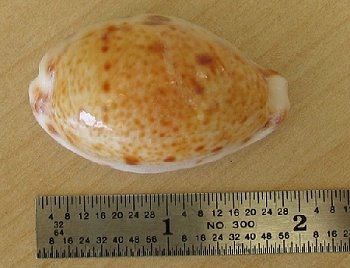
Ruler is in inches!
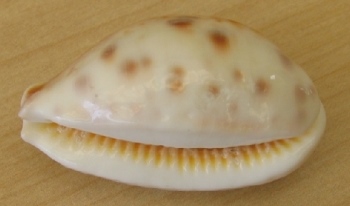
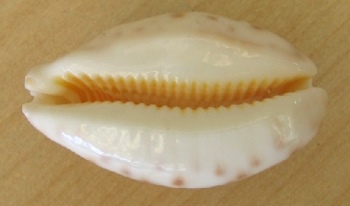
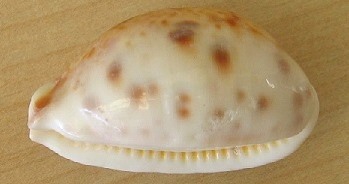
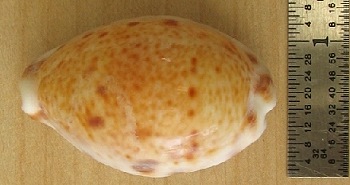
Data:
I traded for and some I purchased some years ago. I found this cowry in
an antique store in Hawaii. It was in a basket with an assortment of other
common seashells all of which I believe are from Hawaiian waters. I suspect
that this cowry may be rashleighana, which is now quite uncommon but I
am not at all sure of this. Positive identification would be much appreciated.
If necessary for identification I have larger photos that can be provided.
Sorry, I don't have a metric ruler. The photos show a ruler in inches.
Thank you for your wonderful service.
Kawika
Email: Kawika
Identified: Lyncina lynx
Discussions:
-
About this shell in question:
in my opinion this is a dead and worn shell of Lyncina lynx.The only problem with this identification is that one cannot see the orange interstices between the teeth but this is possible in worn specimens and also when pictures are made under strong light. The shell size, shape, profile, pattern, teeth, and even the basal carina are as in lynx....Ed H. -
Aloha!
The shell in question is a very faded Cypraea lynx Linnaeus, 1758... CHRIS . -
Without doubt it is a Lyncina lynx (Linnaeus, 1758)...Henk K. Mienis
-
This is for sure Lyncina lynx. Compared it to mine. It is not rashleighana because they do not get that big. Rashleighana is more depressed and round in shape and does not have stained teeth and average around one inch. Hope this helps.... Jeff W.
-
Your shell is an interesting specimen. To me it looks like a large and a bit unusual Cypraea (Lyncina) lynx. In the typical lynx, the space between teeth are usually red, and the dorsal line is well marked. In your specimen, the space between teeth look orange in the photos, and there is no visible dorsal line.
I recently saw a picture of a similar specimen (maybe it was the same specimen), but now I cannot find any references to it in my computer or the internet.
Anyway, my two cents. ...Aloha, Fabio
-
I examined my unknown with a lynx from my collection and find that Ed Heiman is absolutely correct. Albeit badly faded my unknown is definitely a lynx. Both cowries (please see photos- below) have 23 teeth (my count) and both have orangish colour between the teeth. What threw me off on this one was the excellent physical condition and the overall colour. I still can't find any wear on the cowry that I found in the antique shop. Obviously though it is badly faded, probably from a long period of exposure to sunlight (which accounts for its present colouring). ... Kawika



